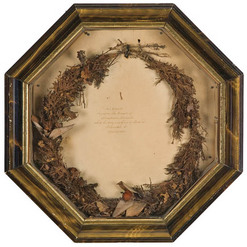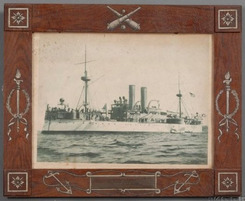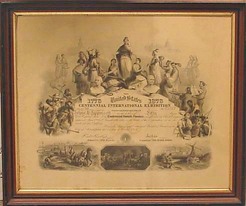Just about any culture with paper has a form of paper-cutting decoration, but establishing much of the history is tricky because of the fragile, ephemeral nature of paper. Still, we know that China and Japan were practicing paper-cutting very early, and the usage depends on the culture. In Japan, paper-cutting was used to create decorations for the home, while in Jewish and Eastern European cultures, the cuttings often had a religious theme. The cut-paper objects that survive are very collectible, and among the most collectible are German examples called scherenschnitte, which means “scissor cuts.” The Germans evolved a technique that depended heavily on folding the paper, and as a result, these designs often have a great deal of symmetry. The skill traveled to America during the colonial era amongst the Pennsylvania German settlers and moved westward as they did.
Because of their ephemeral nature, scherenschnitte works are already rare. When you add the price-boosting popularity of folk art and excellent condition, prices can be very strong for a typical Pennsylvania example (pictured above) with good condition and provenance. Smaller examples in common forms like animals and snowflakes can often be found for less. Color is often added to enhance the details, as is the case with this example. Cuttings by known artists also bring good prices, as the delicate details allow scholars to draw some connections if not actually identify the artist, and more modern pieces by artists like David Ellinger (read our reference note) are always popular when they appear at auction.
-Hollie Davis, Senior Editor, p4A.com


![Document Signed; Jefferson (Thomas) & Madison (James), 1803, Ohio Land Grant. Thomas Jefferson [autograph/autographed] signed land grant, document signed, partially printed on vellum, May 2, 1803, signed by Thomas Jefferson as President (1801 to 1809) and James Madison as Secretary of State (President, 1809 to 1817).](http://www.prices4antiques.com/item_images/medium/53/62/19-01.jpg)





